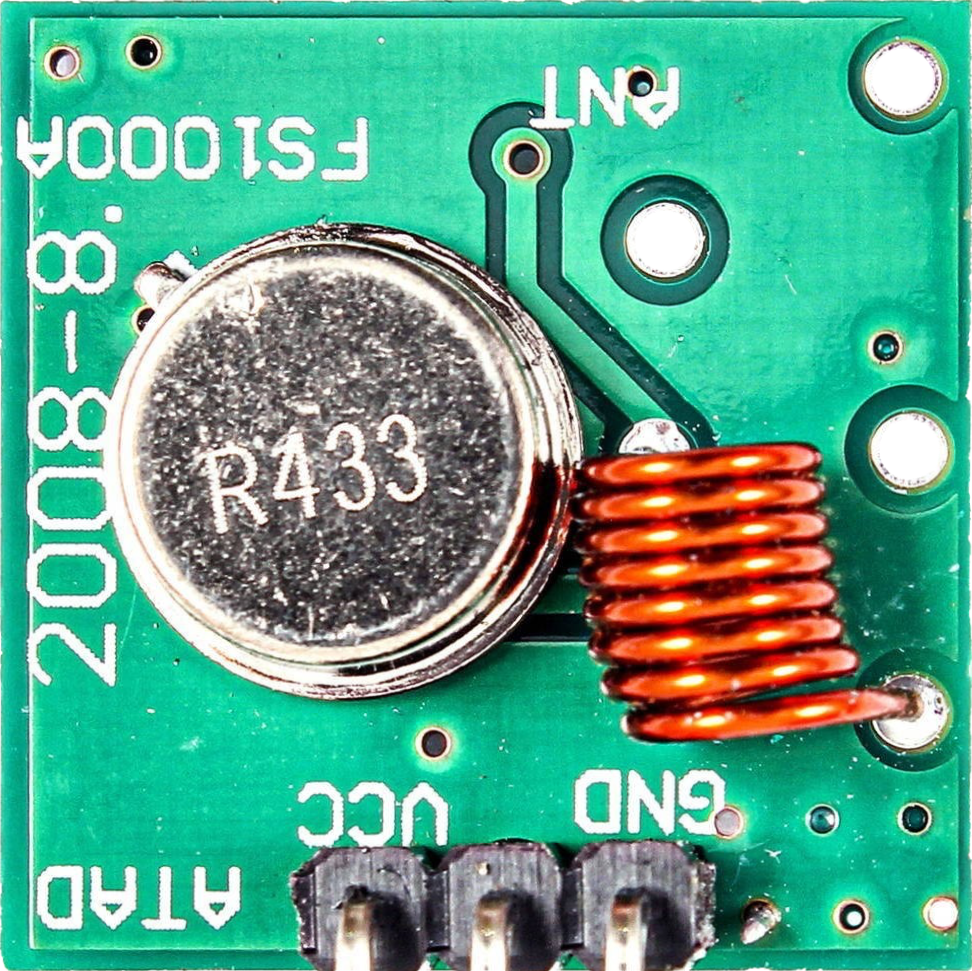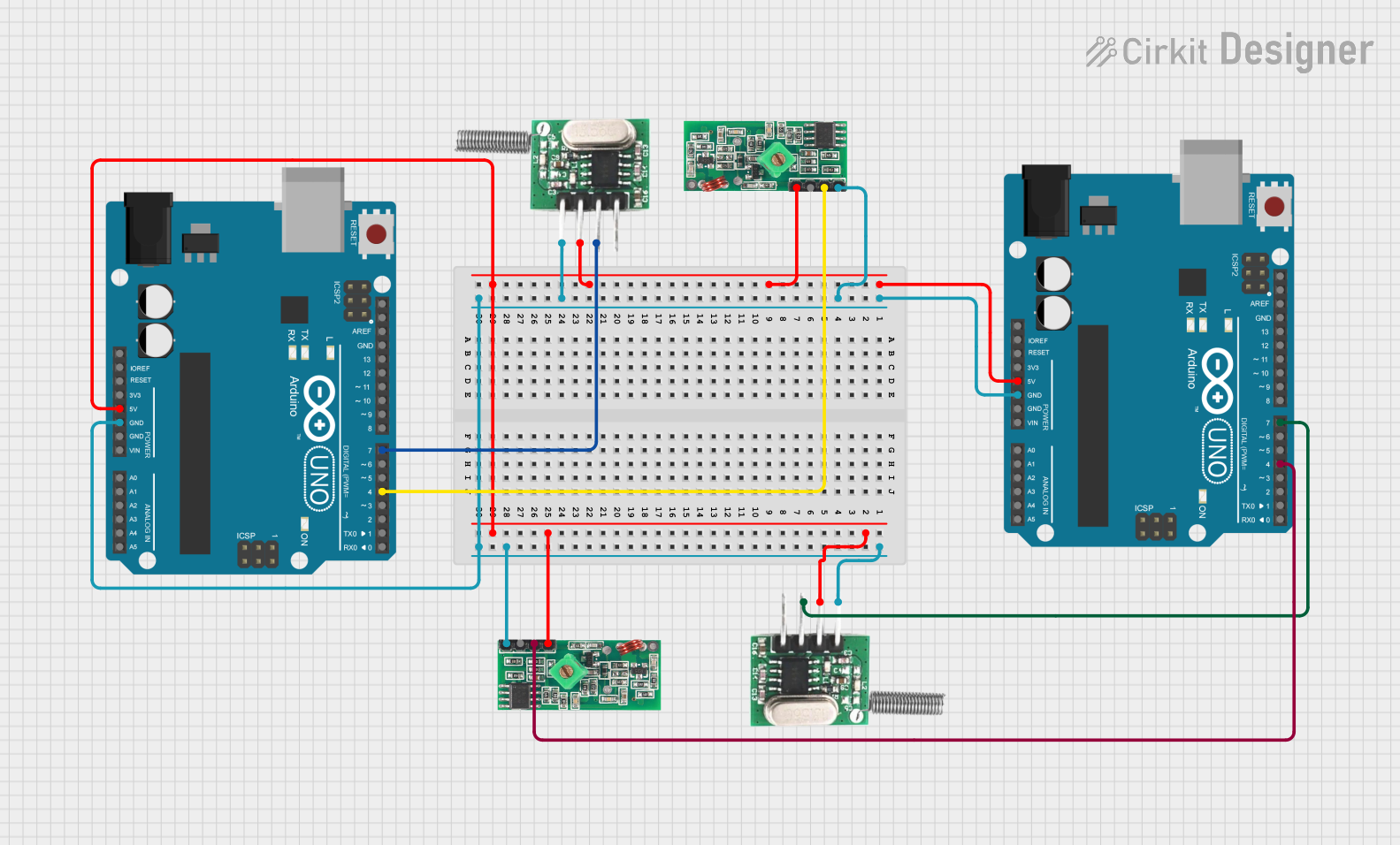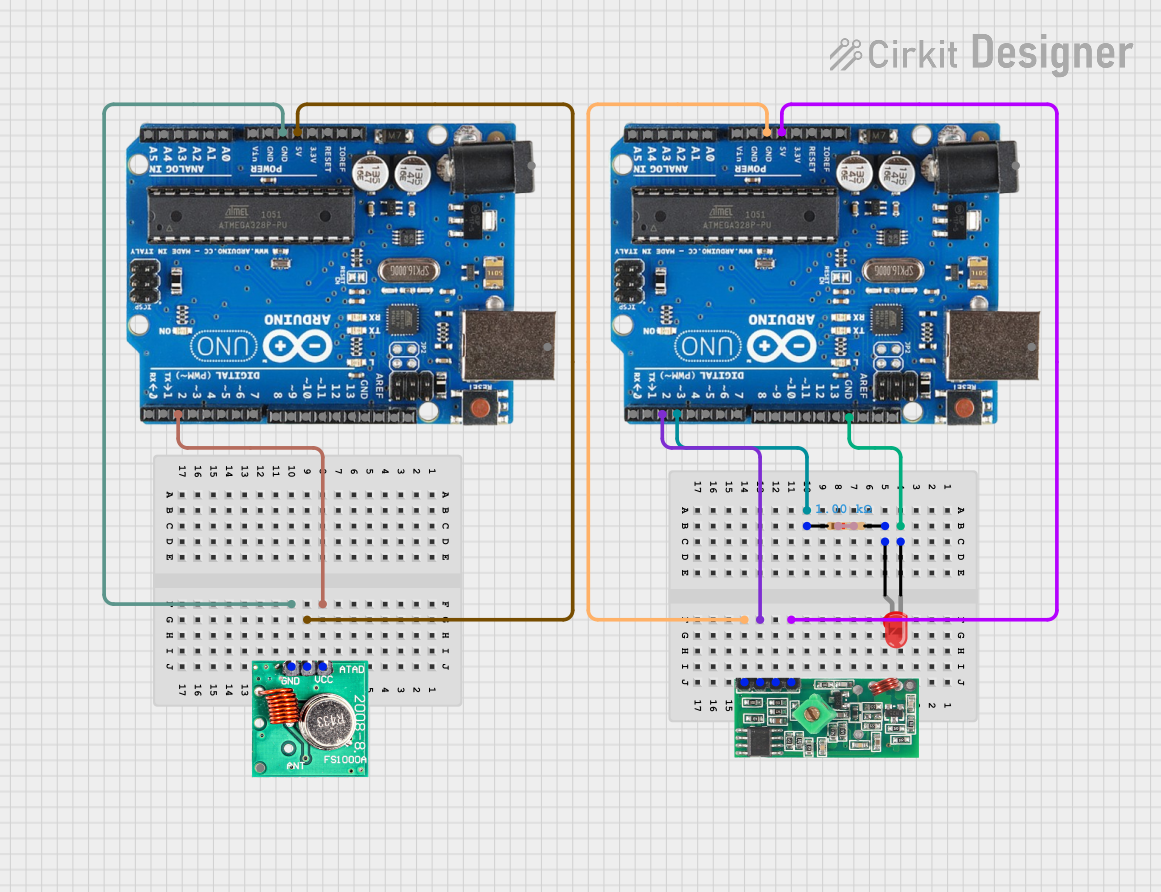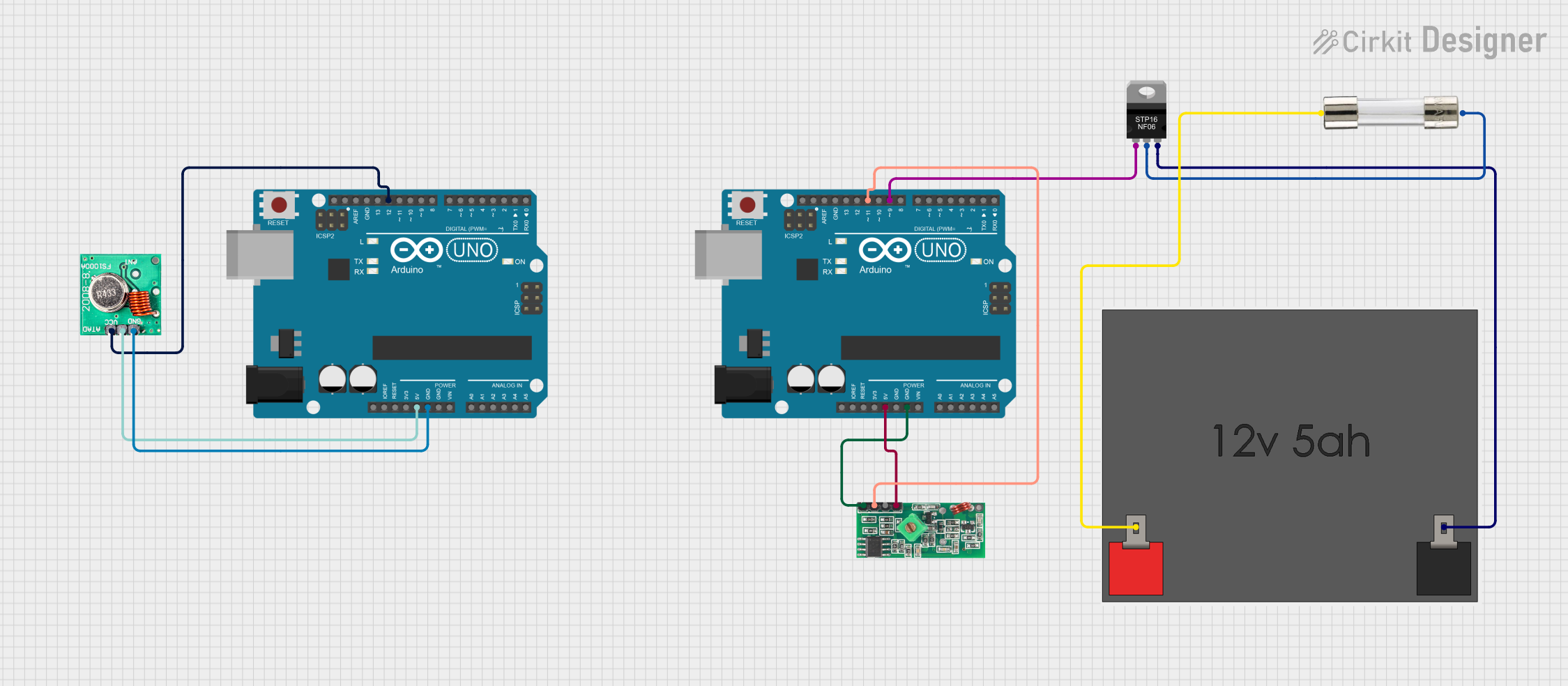
How to Use FS1000A 433MHz RF Transmitter: Examples, Pinouts, and Specs

 Design with FS1000A 433MHz RF Transmitter in Cirkit Designer
Design with FS1000A 433MHz RF Transmitter in Cirkit DesignerIntroduction
The FS1000A 433MHz RF Transmitter is a low-cost, compact wireless module capable of transmitting radio signals at the frequency of 433MHz. It is widely used in various applications such as remote controls, wireless alarm systems, home automation, and telemetry. Due to its ease of use and ability to interface with microcontrollers like the Arduino UNO, it has become a popular choice for hobbyists and professionals alike.
Explore Projects Built with FS1000A 433MHz RF Transmitter

 Open Project in Cirkit Designer
Open Project in Cirkit Designer
 Open Project in Cirkit Designer
Open Project in Cirkit Designer
 Open Project in Cirkit Designer
Open Project in Cirkit Designer
 Open Project in Cirkit Designer
Open Project in Cirkit DesignerExplore Projects Built with FS1000A 433MHz RF Transmitter

 Open Project in Cirkit Designer
Open Project in Cirkit Designer
 Open Project in Cirkit Designer
Open Project in Cirkit Designer
 Open Project in Cirkit Designer
Open Project in Cirkit Designer
 Open Project in Cirkit Designer
Open Project in Cirkit DesignerTechnical Specifications
Key Technical Details
- Frequency: 433MHz
- Voltage: 3V to 12V (Vcc)
- Current Consumption: 9mA (typical at 3V)
- Modulation: Amplitude Shift Keying (ASK)
- Transmission Range: 20-200 meters (environment dependent)
- Operating Temperature: -10°C to +70°C
Pin Configuration and Descriptions
| Pin Number | Name | Description |
|---|---|---|
| 1 | Vcc | Power supply (3V to 12V) |
| 2 | Data | Data input from microcontroller |
| 3 | GND | Ground connection |
Usage Instructions
Interfacing with a Circuit
- Power Supply: Connect the Vcc pin to a 3V to 12V power source. Ensure that the power supply is clean and stable.
- Data Input: The Data pin should be connected to a digital output pin on the microcontroller.
- Ground: Connect the GND pin to the ground of the power supply and the microcontroller.
Important Considerations and Best Practices
- Antenna: For optimal range, attach a 17cm wire to the antenna pad or the module to act as an antenna.
- Power Supply: Avoid power supply noise as it can affect the transmission quality. A decoupling capacitor (e.g., 10uF) between Vcc and GND can help.
- Data Rate: Keep the data rate below 10kbps to ensure reliable communication.
- Pairing: Ensure that the transmitter and receiver are tuned to the same frequency for proper communication.
Example Code for Arduino UNO
#include <VirtualWire.h>
const int transmit_pin = 12; // FS1000A Data pin connected to Arduino pin 12
void setup() {
vw_set_tx_pin(transmit_pin); // Set the transmit pin
vw_setup(2000); // Bits per sec
}
void loop() {
const char *msg = "hello";
vw_send((uint8_t *)msg, strlen(msg)); // Send the message
vw_wait_tx(); // Wait until the whole message is gone
delay(1000); // Wait for a second before sending the next message
}
Troubleshooting and FAQs
Common Issues
- No Signal: Ensure the antenna is properly attached and the power supply is within the specified range.
- Weak Signal: Increase the power supply voltage up to 12V for a stronger signal or check the antenna length.
- Interference: Use a different channel or frequency if there is significant interference from other devices.
Solutions and Tips
- Antenna Length: Use a quarter wavelength antenna for 433MHz, which is approximately 17cm.
- Power Supply: Always use a regulated power supply and consider using a decoupling capacitor.
- Pairing: Make sure the receiver module is compatible with the FS1000A and is set to the same frequency.
FAQs
Q: Can I use multiple FS1000A modules together? A: Yes, but ensure each transmitter-receiver pair operates on a different frequency or use time-division multiplexing to avoid interference.
Q: What is the maximum range I can achieve with the FS1000A? A: The range is highly dependent on the environment, antenna, and power supply, but under optimal conditions, it can reach up to 200 meters.
Q: How can I increase the transmission range? A: Use the maximum rated voltage for Vcc, ensure a clear line of sight, and use a proper antenna.
Q: Is the FS1000A compatible with all microcontrollers? A: The FS1000A can be interfaced with any microcontroller that has a digital output pin, including Arduino, Raspberry Pi, and ESP8266.
For further assistance, consult the community forums or the manufacturer's technical support.